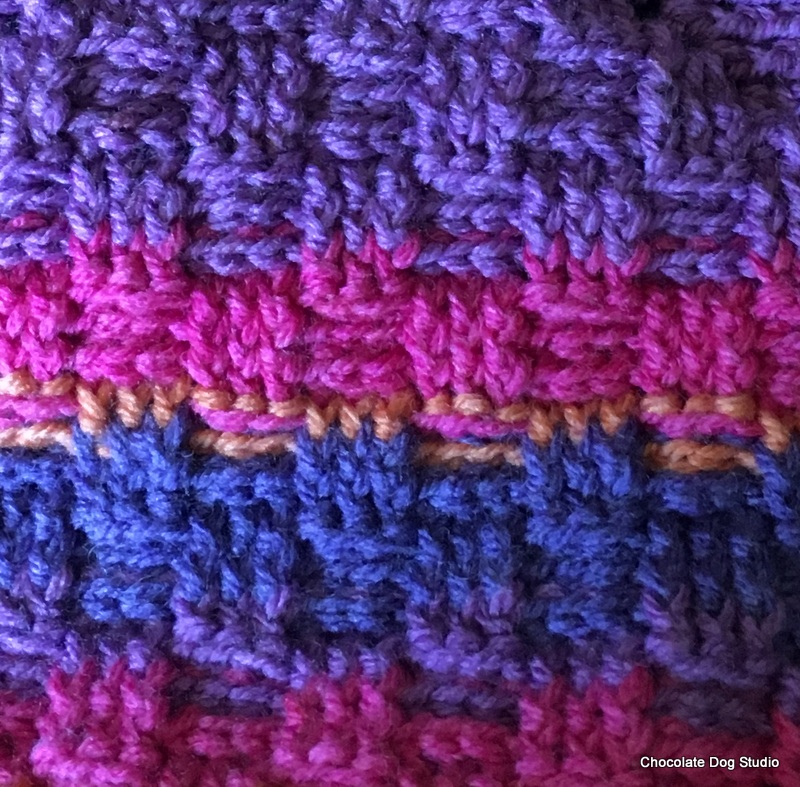
Last week we discussed that texture can be a part of the yarn. Texture can also be a part of the stitches, part of the fabric of our project. So, this week we’re talking about textural stitches.
Merriam Webster’s online dictionary includes this definition of texture: Something composed of closely interwoven elements; specifically, a woven cloth.
When we crochet we are taking string and applying different knots to it with a stick. Crocheters and knitters take sticks and string and make fabric. You may have seen a meme to this effect floating around the Internet, but I think crocheters crank it up a notch as we only use one stick! I know that this is a very simplified description of what we do but think about it for a moment:
Sticks + string = fabric.
Wow, we are talented and gifted people. We have an ability shared with fisherman (who repair their nets) and weavers (who make cloth).
Let’s Get Back to the Texture Lesson
- Your crocheting creates a fabric.
- Your stitches create the texture of the fabric.
When you add in different stitches in different yarns you get an unlimited amount of texture variations.
(The above photo is a beautiful C2C, or corner-to-corner, afghan I made add for my father-in-law. The stitches give it the feeling of a waffle. Below is the same stitch crocheted in a plain gray yarn.)
More Textural Stitches
A basket weave crochet stitch pattern can also add interest, as seen below.
Changing yarn size and hook size can make a huge difference in the texture of various stitches. The top left photo is a look at the scale of the stitches. You can see that the bulky yarn is much chunkier. The green lace-weight yarn is soft and the texture, while it shows up beautifully, is not as pronounced as the aqua cotton DK weight yarn.
Turning your work can sometimes have the effect of making a project reversible; you won’t have a wrong side and a right side. But, some blankets only have a right side (and the pattern will let you know which side is the right side). Many sweaters and most socks are worked in the round and there is only one right side. If you are adding surface crochet (like flower petals), then you will have a right side and a wrong side.
The Absolute Beginner Afghan
Here is what I consider the Absolute Beginner Afghan. I like this afghan for beginners as there are
- no edges to worry about getting straight
- less worries about gauge
- no sewing blocks together
- only two stitches
- no need for an extra border unless you want one
- no turning of your work as it is worked in rounds = less confusion
The yarn specified can be tricky and it is better to pick a different yarn for this afghan if you have never crocheted an afghan..
Talk to you later!
Karen









